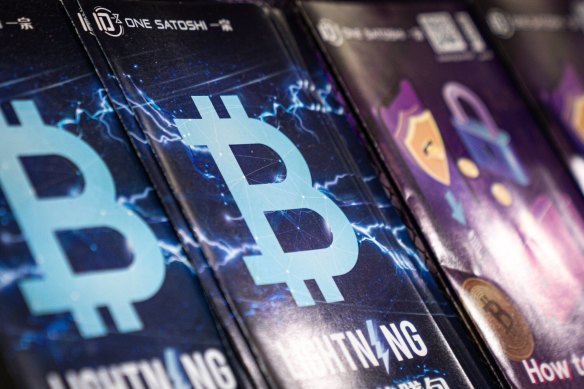
Todd is not one of the usual suspects put forth by sleuths. (On Polymarket, a prediction market where bitcoin fans were placing bets on whom the film would identify as Nakamoto before Tuesday’s release, Todd’s name was nowhere on the list.) And some bitcoin believers will scoff at the idea that Todd, a cryptography whiz who was just 23 when the bitcoin white paper was released, would have been capable of conceiving such a sophisticated system.
But Hoback marshals plenty of evidence to support his theory. The most compelling clue is a 2010 exchange on a bitcoin forum in which Todd responded to a post by Nakamoto in a way that seemed to be continuing the bitcoin creator’s train of thought, perhaps indicating that they were the same person, and that he had mistakenly posted from the wrong account. Soon after, Todd’s account went dark, and Nakamoto disappeared.
If Nakamoto still controls these wallets, and has a way to retrieve what’s inside, it could mean that there is a deca-billionaire hiding in plain sight, who could emerge at any time.
The film also points to several other incongruities in Todd’s story: an old resume of his that claimed proficiency in C++, the programming language used to write the original bitcoin code base, which he would later deny knowing; a fake account he may have created to cover his tracks while establishing a new bitcoin feature known as replace-by-fee; and some similarities in word choice and writing style between him and Nakamoto.
Then there’s Todd’s on-camera reaction when Hoback confronts him with his theory. He stammers; he scoffs; he calls the idea “ludicrous.” But he doesn’t exactly absolve himself, or name a more plausible suspect.
“We gave him every opportunity to explain why he made that post in 2010,” Hoback told me. “And not only does he not answer the question, he’s at a loss for words. Peter’s never at a loss for words.”
Loading
Compelling as it is, none of this amounts to a smoking gun. And filmmakers who devote years of their lives to solving a mystery, as Hoback did here, have a vested interest in coming to a tidy conclusion. To prove beyond a reasonable doubt that Todd is Nakamoto, you would have to catch him using the private keys to Nakamoto’s bitcoin wallet, or dig up some incontrovertible forensic evidence connecting the two. That didn’t happen here.
But I found the evidence persuasive enough to run with the idea that Todd was, at a minimum, substantially involved in creating bitcoin, at least until a better theory emerges.
On Tuesday, Todd sent me an email denying the film’s central claim.
“For the record, I am not Satoshi,” he wrote. (He added: “It’s a useless question because Satoshi would simply deny it.”)
He said the 2010 message board post, which the film held up as evidence of his connection to Nakamoto, was “just a coincidence”.
“I’m not Satoshi, so that’s just me replying with a minor correction to one of Satoshi’s posts,” he wrote.
Now, to the second question raised by the film: who cares who Nakamoto is?
Bitcoin’s successes and failures as a cryptocurrency thus far (and there have been plenty of both) haven’t hinged on the identity of its founder. Nakamoto stopped contributing to bitcoin’s development in 2011, and hasn’t taken part in the most important discussions about the project’s future. Knowing who he is wouldn’t dissuade the legions of bitcoin fans who think it’s the “one true currency,” or persuade crypto sceptics who think it’s all a scam.

Leaflets featuring the bitcoin logo at a One Satoshi over-the-counter (OTC) cryptocurrency store in Hong Kong.Credit: Bloomberg
Hoback made the case, both in the film and in our interview, that the reason to care about Nakamoto’s identity comes down to money and power.
According to many estimates, Nakamoto controls, or used to control, a digital trove of more than 1 million bitcoin, about 5 per cent of the total supply. At today’s prices, that stash would be worth more than $US60 billion ($89 billion), making its owner one of the richest people in the world.
A vast majority of the coins in the so-called Satoshi wallets have never been touched. But they haven’t been destroyed, either. If Nakamoto still controls these wallets, and has a way to retrieve what’s inside, it could mean that there is a deca-billionaire hiding in plain sight, who could emerge at any time.
“Wouldn’t you want to know if there was an anonymous person out there who controlled one-20th of all the gold on the planet?” Hoback asked me.
Loading
I would, of course, but I would be even more curious to know what Nakamoto thinks of what has happened to bitcoin in the 16 years since he (or she, or they) created it.
It’s easy to lose sight of how wild a ride it has been. In less than two decades, bitcoin has given rise to a trillion-dollar cryptocurrency industry, enabled scams and illicit activity on a previously unimaginable scale, created and destroyed world-historic fortunes, been adopted as legal tender by several countries, sparked bitter regulatory fights around the world, become part of millions of Americans’ retirement funds and spawned a tribe of die-hard bitcoin “maximalists” who believe the currency is going to replace the US dollar.
It’s a great story, and I hope Nakamoto will step out of the shadows and tell it someday. Until then, we’re left to wonder, and to admire the work of those, like Hoback, who go digging for clues.
This article originally appeared in The New York Times.



























